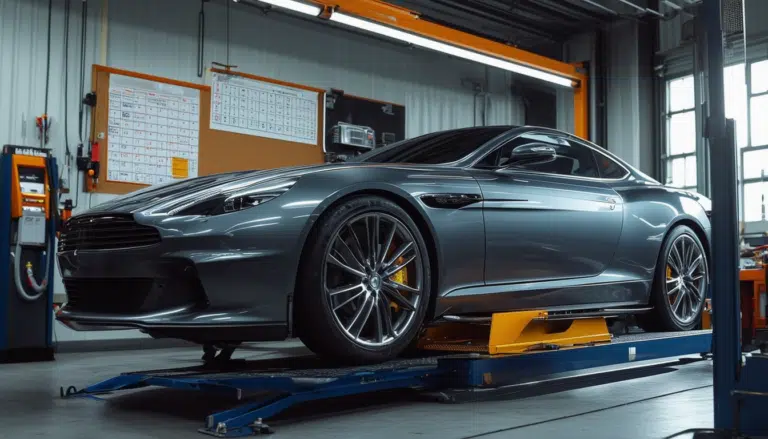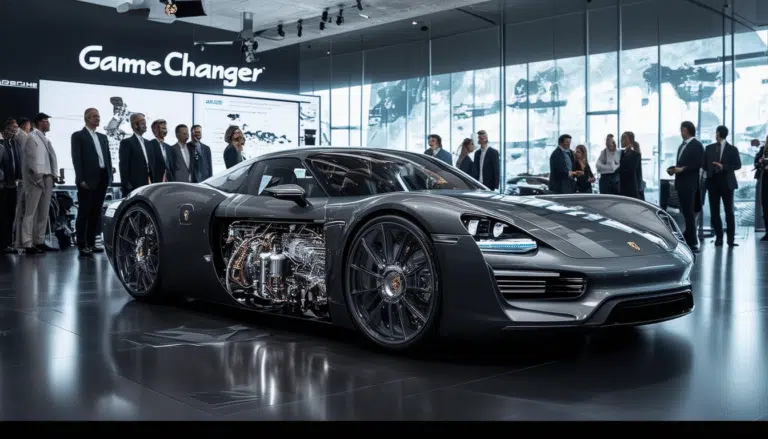Sixteen cylinders: the elite of automotive engineering
In the vibrant universe of automotive engineering, there is nothing more fascinating than the complexity and concentrated power of a sixteen-cylinder engine. Conceived as the pinnacle of automotive design, this type of engine represents the unbridled ambition of manufacturers to push the machine to its most demanding limits. From its genesis in the United States during the 1930s to its modern evolution that embodies the most advanced technological innovation, the sixteen-cylinder engine remains the emblem of exclusivity and extreme performance. This symbol of prestige continues to capture the imagination of motor enthusiasts and set standards in the industry.
Introduction
In the fascinating world of automotive engineering, sixteen-cylinder engines represent the pinnacle of innovation and luxury. From their first appearances in the United States in the 1930s to their resurgence in the modern era, these engines continue to capture the imagination of car enthusiasts around the globe. This article explores how V16 engines have evolved throughout history, from the iconic Cadillac V-16 to the current innovations from Bugatti.
The First V16 Engines: Cadillac and Marmon
In the 1930s, the United States witnessed the arrival of the first V16 engines in the automotive industry. The Cadillac V-16 became a symbol of luxury and power, with a 7.4-liter engine that produced between 165 and 185 horsepower. Despite its significant weight of around 600 kg, these vehicles achieved impressive speeds for their time, ranging between 145 and 160 km/h.
On the other hand, Marmon, another American manufacturer, introduced its own version of the V16 engine with 8 liters of displacement and 200 hp, which was lighter than Cadillac’s. However, despite its lightness and performance, Marmon failed to attract enough customers, and its V16 was discontinued in 1933.
The European Innovation: Bugatti and Bucciali
In Europe, Bugatti and Bucciali took the innovation of V16 engines to the next level. Bugatti applied its experience with U16 aviation engines to its racing cars. The Type 45 Grand Prix, equipped with a U16 engine producing 250 hp, reached an impressive 240 km/h, thus cementing Bugatti’s reputation in the automotive world.
Bucciali, for its part, presented the TAV Type 5, known as Bucciali Double Huit, at the Paris Motor Show. Although this model was more of an exhibition piece than a mass-produced car, it demonstrated the innovative possibilities of front-wheel drive alongside a powerful V16 engine.
Italy: Maserati and Alfa Romeo
In Italy, Maserati ventured into the V16 configuration for its competition vehicles. Its Tipo V4 and V5 models, manufactured in the late 1920s and early 1930s, were powered by V16 engines delivering up to 375 hp, reaching speeds of 270 km/h.
Alfa Romeo also bet on the V16 with the Alfa Tipo 16 C 316, used in Grand Prix competitions during the 1938 and 1939 seasons. This innovative engine, composed of two V8 blocks, stood out for its power, reaching 490 hp in its most advanced versions.
The Challenge of Auto Union and BRM in Racing
The German firm Auto Union, the precursor to Audi, was a pioneer in the use of V16 engines in competition vehicles, facing giants like Mercedes-Benz. With a revolutionary mid-engine configuration, the Auto Union Tipo A powered by a V16 offered 520 hp, reaching speeds of up to 315 km/h.
In the United Kingdom, BRM developed a V16 engine for Formula 1 during the 1950s. Despite its reliability issues, especially in its first supercharged version, this engine achieved commendable speeds, positioning BRM in the history of motorsport.
The Modern Era and the Dream of Zampolli
The modern history of V16 engines would not be complete without mentioning Claudio Zampolli and his creation, the Cizeta Moroder V16T. This vehicle, born from Zampolli’s dream and funded by music producer Giorgio Moroder, featured a 6.0-liter V16 engine producing 540 hp. Although production was limited, this car remains an icon of exclusivity and Italian engineering.
The Resurgence of Bugatti
Today, Bugatti has revived the legacy of multi-cylinder engines with developments like the Chiron and the Tourbillón. The Chiron, equipped with a W16 engine with four turbos, reaches dizzying speeds and remains a reference in the luxury automotive industry. Meanwhile, the Tourbillón combines the W16 engine with three electric motors to total 1800 hp, showcasing the path towards the future of high-performance hybrid automobiles.
Sixteen-cylinder engines remain an exclusive dream, symbolizing the pinnacle of creativity and automotive engineering. While times change, the desire for innovation and passion for exceptional engines endures.
Looking back at the history of sixteen-cylinder engines, a rich and varied narrative unfolds that encompasses both tradition and innovation. From their emergence in the 1930s, these engines have been a symbol of power and sophistication in the automotive industry. Cadillac and Marmon were pioneers in bringing these giants to the roads, establishing a standard of luxury and performance that few brands could match.
Over time, other companies like Bugatti, Alfa Romeo, and Maserati embraced this engine configuration, each imprinting their own distinctive mark. Bugatti, known for pushing the limits of speed and design, and Alfa Romeo, with its passion for competition, demonstrated that the sixteen-cylinder engine could both inspire and dominate on the racetracks. Meanwhile, in England, BRM put its own twist on this mechanical complexity in Formula 1, although facing reliability challenges.
The legacy of these engines is not solely found in the past. The resurgence of the Bugatti Veyron and subsequently the Bugatti Chiron, with its impressive architecture of sixteen cylinders arranged in a W configuration, highlights the persistent allure of this engine layout to capture the imagination of both automotive enthusiasts and engineers alike. These modern creations not only stand out for their incredible power and speed but also for their ability to integrate cutting-edge technology.
In summary, sixteen-cylinder engines represent the pinnacle of automotive engineering, combining luxury, power, and heritage. They are a tribute to technical daring and creativity that continue to influence automotive design to this day. The story of these engines is a testament to the ongoing pursuit of innovation and excellence in the industry.





